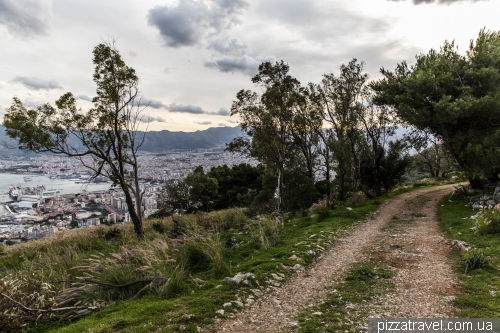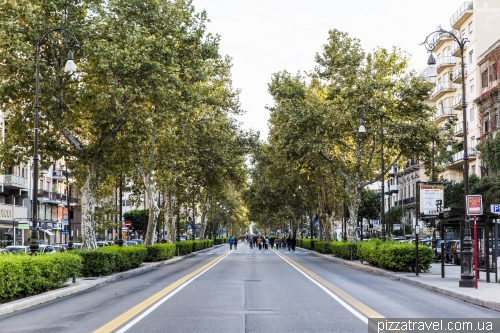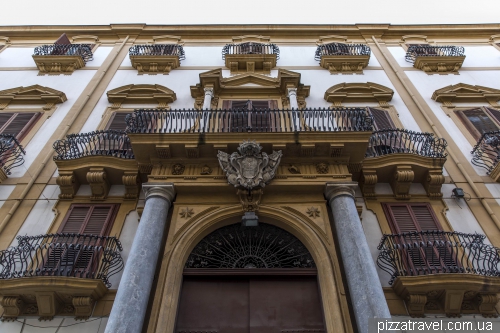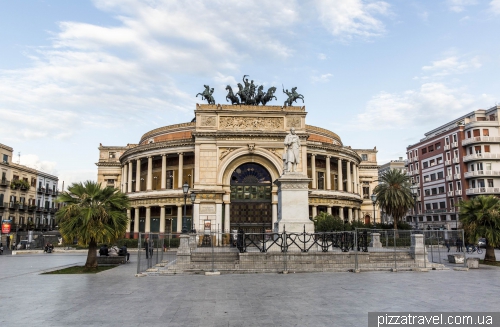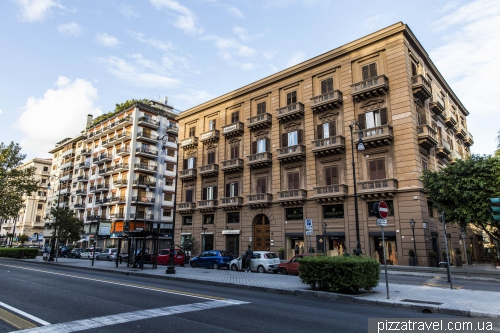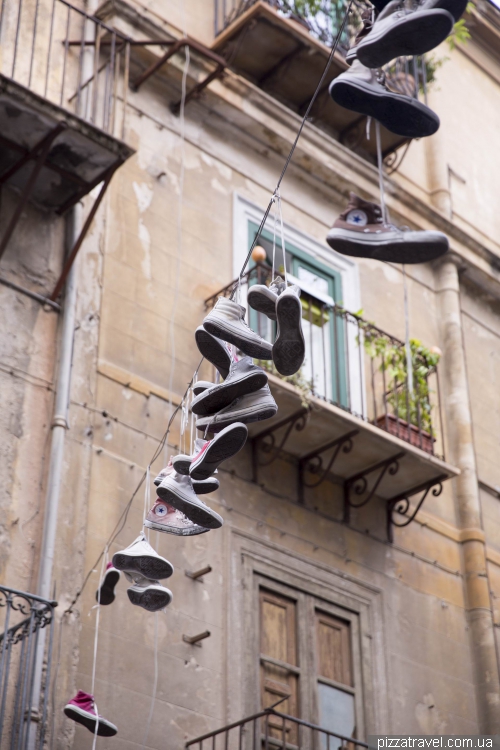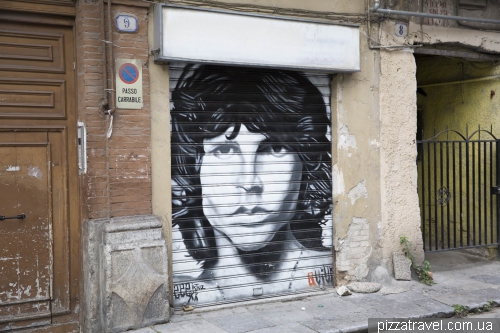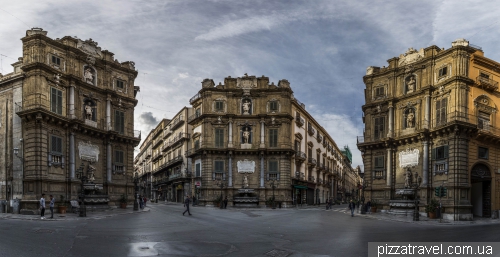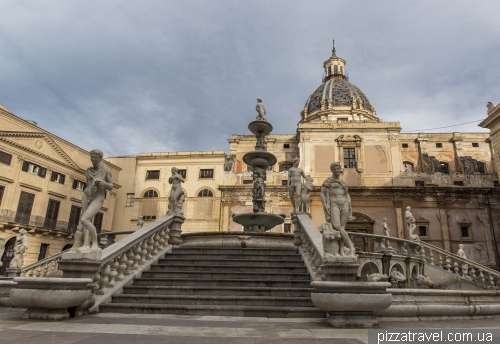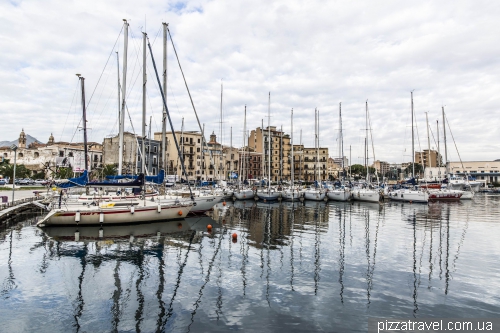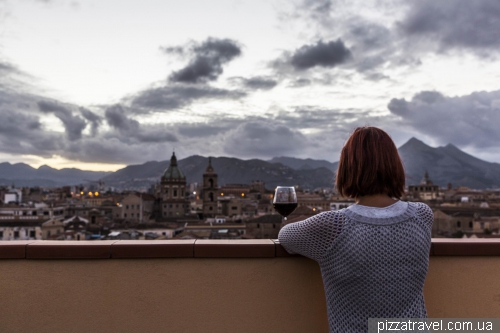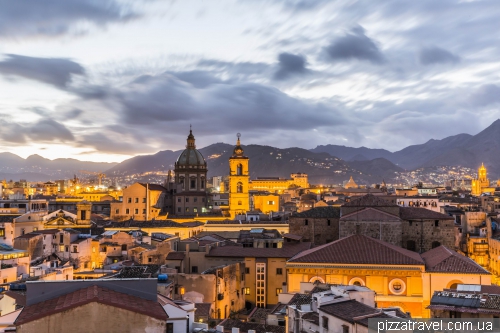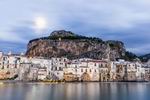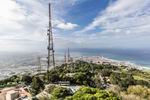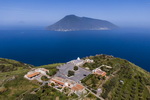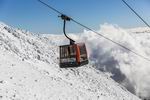Mafia still exists, for example a few years ago almost a hundred Mafiosi were arrested (link).
Despite many negative reviews, we liked Palermo, this is a normal tourist city. Generally, to get a good impression of any city, you need at first to see it from above.
On the mountain Monte Pellegrino, you can see the castle Castello Utveggio. It is a research center, which is closed to the visitors. However, according to local media reports, since 2015 a park around the castle and an observation deck can be visited.
There is a bus 812 (schedule) from the Politeama theatre which goes to the top of the mountain. It has a stop near the turn to the castle and continues a little further to the religious place Santuario Montepellegrino. We decided not to wait for a bus, and took a taxi. Taxi drivers in Palermo are real mafia. Our driver wanted 40 EUR for 12 kilometers. We gave him 20 EUR which is also exorbitant.
But the castle was closed! Most likely because we arrived on Saturday. Perhaps it only works on weekdays from 8:30 to 17:00, during working hours. But we're not upset, went back to the bus stop and then went uphill to the start of the "Trail". There begins the path to the radio tower, which offers excellent views of Palermo, especially at sunset.
Also, here are large cactuses and rabbits.
Attention! Do not wait till the dark, as there are no streetlights and you need to get to the bus stop.
It is best to walk around Palermo at the weekend when downtown streets are pedestrian. We walked from the English Garden (Giardino Inglese) along the street Via della Libertà in the direction of Pretoria fountain.
Palermo is quite beautiful and green city. There are many high-rise buildings, but absolutely all of them are different.
Palermo has two historical theaters: Politeama (1874) and Massimo (1897).
Piazza Vigliena (1600) is similar to the square of the four fountains in Rome. That's why locals name it Quattro Canti or Four Corners. On the ground floor of each house is a fountain symbolizing the season of the year, upper - the statues of kings and saints.
A little further is the historical fountain Pretoria (1554-1555), with statues of mythological characters, animals and fantastic monsters.
If you turn to the right from the Piazza Vigliena onto Via Vittorio Emanuele, then you get to the Palermo Cathedral (XII century - 1801). Its distinguishing feature are the many architectural styles. A little further is the main entrance to the historical part of the city - gate Porta Nuova (1669) and the Royal Palace (XI century).
To the left from the Piazza Vigliena will be a promenade with yachts. Unfortunately, a large part of the coastline is occupied by a port. It is seen from above.
Port makes a significant contribution to the city budget and therefore can not be removed. Although Palermo requires the good promenade.
This funny thing called Nautoscopio (2009), during the warmer months it's a bar.
We stayed at the Hotel Ambasciatori (booking.com), it is located near the train station and has the best roof terrace in the city. Second sunset we met here.
Transport map of Palermo (4Mb, PDF).
Guide to Palermo (7Mb, PDF).
Getting there: Palermo has an international airport. At the baggage claim area, you can buy bus tickets to the main train station in the center (~6 EUR).



